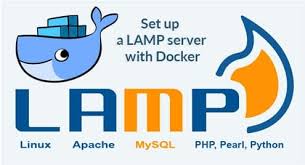The LAMP Stack: A Foundation for Web Development
Introduction
The LAMP stack, an acronym for Linux, Apache, MySQL, and PHP, has been a cornerstone of web development for decades. This combination of technologies provides a robust and flexible platform for building dynamic and scalable web applications. This white paper will explore the components of the LAMP stack, its benefits, and key considerations for its implementation.
Understanding the Components
- Linux: A versatile and open-source operating system that provides a stable and secure foundation for the LAMP stack. It offers various distributions, such as Ubuntu, Debian, and CentOS, each with its own strengths and characteristics.
- Apache: A widely used web server that handles incoming requests from clients, processes them, and sends responses. It's known for its performance, reliability, and extensibility through modules.
- MySQL: A powerful relational database management system (RDBMS) that stores and manages structured data in tables, rows, and columns. It offers efficient query processing, scalability, and a rich feature set.
- PHP: A popular scripting language that is primarily used for server-side web development. It's known for its ease of use, versatility, and integration with HTML.
Benefits of the LAMP Stack
- Open-source: All components of the LAMP stack are freely available, reducing costs and providing flexibility.
- Community and Ecosystem: A vast community of developers and users offers extensive resources, support, and third-party tools.
- Reliability: The LAMP stack has a proven track record of reliability and stability, making it a trusted choice for many web applications.
- Scalability: The components can be scaled horizontally or vertically to accommodate growing workloads and traffic.
- Flexibility: The LAMP stack is adaptable to various project types and sizes, from small personal websites to large enterprise applications.
Key Considerations
- Learning Curve: While the LAMP stack is relatively easy to learn for beginners, mastering all components and their interactions may require time and effort.
- Security: Implementing robust security measures is essential to protect LAMP-based applications from vulnerabilities and attacks.
- Performance Optimization: Careful attention to performance optimization is necessary, especially for high-traffic applications, to ensure optimal user experience.
- Maintenance and Updates: Regular updates and maintenance are crucial to keep the LAMP stack secure and up-to-date.
Common Use Cases
- Content Management Systems (CMS): WordPress, Drupal, and Joomla are popular CMS platforms built on the LAMP stack.
- E-commerce: Online stores and shopping carts often leverage the LAMP stack for its scalability and flexibility.
- Forums and Communities: Social platforms and discussion forums frequently use the LAMP stack for user interaction and content management.
- Custom Web Applications: The LAMP stack is versatile and can be used to build a wide range of custom web applications tailored to specific needs.
Conclusion
The LAMP stack remains a powerful and reliable foundation for web development. Its open-source nature, community support, and flexibility make it a popular choice for developers of all levels. By understanding the components, benefits, and considerations associated with the LAMP stack, you can effectively build and maintain robust and scalable web applications. Contact ias-research.com for details.
References
- LAMP Stack Guide: https://www.mysql.com/
- Apache Software Foundation: https://www.php.net/
- Linux Foundation:



